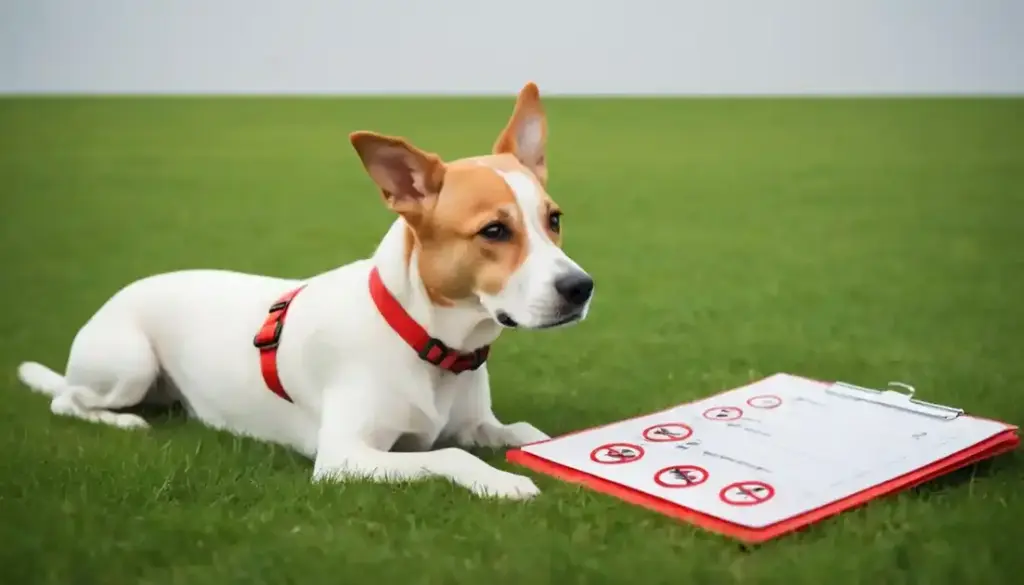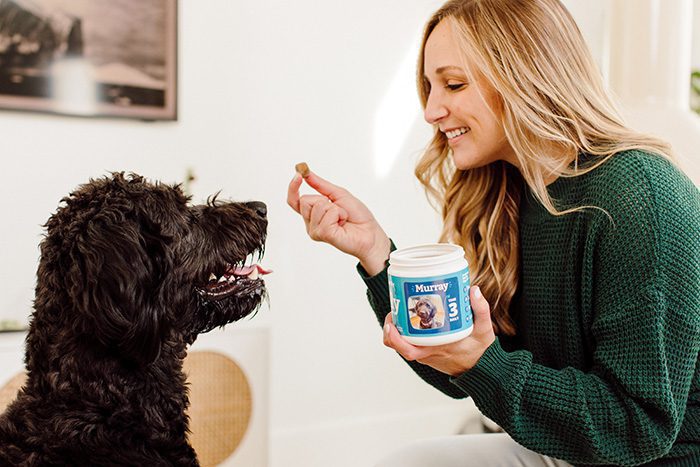Did you know that recognizing the signs of bloat in dogs can mean the difference between life and death?
Gastric dilatation-volvulus (GDV), a sudden and life-threatening condition, strikes without warning, often escalating from mild discomfort to a veterinary emergency within hours.
Early detection is critical, as timely intervention dramatically increases survival rates.
In this guide, we’ll equip you with the knowledge to identify subtle symptoms and implement proven prevention strategies, empowering you to protect your canine companion from this devastating risk.
Understanding Signs of Bloat in Dogs
Bloat, medically termed gastric dilatation-volvulus (GDV), is a sudden and severe condition where a dog’s stomach expands due to trapped gas, fluid, or food—and may twist, cutting off blood flow and trapping toxins .
This two-phase crisis begins with dilation (swelling) followed by volvulus (twisting), creating a life-threatening cascade.
Why Bloat Is a Race Against Time
As the stomach swells, it presses against the diaphragm, making breathing difficult, and compresses major blood vessels, reducing oxygen to vital organs.
Without prompt treatment, irreversible tissue damage, systemic shock, or cardiac arrest can occur within hours.
Breeds at Higher Risk
While any dog can develop bloat, certain breeds are genetically predisposed due to their deep-chested anatomy:
- Great Danes
- German Shepherds
- Weimaraners
- Boxers
- Saint Bernards
- Doberman Pinschers
Understanding these risks—and acting swiftly if symptoms arise—can mean the difference between life and death.

Signs and Symptoms of Bloat in Dogs
Recognizing bloat in dogs requires vigilance, as symptoms can escalate rapidly or mimic less severe issues.
Below are the critical signs to watch for, along with insights into how they may vary across breeds and stages of the condition.
Common Signs of Bloat
- Dry-Heaving or Retching: Your dog may strain to vomit repeatedly without producing anything except white foam.
- Abdominal Swelling: The belly may appear distended or feel tight to the touch, though this isn’t always visible early on
- Restlessness or Anxiety: Pacing, inability to settle, or frequent position changes (like the “downward-facing pose,” with the rear raised and chest low).
- Excessive Drooling and Panting: Heavy salivation or rapid, labored breathing, even when inactive.
- Pale Gums and Weakness: Gums may lose their pink hue, and your dog might collapse or struggle to stand
Less Obvious Clues
Some symptoms are subtler but equally urgent:
- Whining or vocalizing discomfort when the abdomen is touched.
- Rapid heart rate (tachycardia) paired with lethargy.
- Unproductive attempts to burp or pass stool
How Symptoms Vary
- By Breed: Deep-chested breeds like Great Danes may show pronounced abdominal swelling, while smaller dogs might exhibit restlessness or whining first .
- By Stage: Early bloat may involve mild discomfort, but as the stomach twists, signs like collapse or pale gums become severe within hours.
Real-Life Scenarios
Consider Max, a 4-year-old Great Dane who began pacing and dry-heaving after gulping down a large meal.
His owner noticed his enlarged abdomen and rushed him to the vet—a decision that saved his life.
Contrast this with Luna, a Weimaraner who initially only showed whining and reluctance to lie down, delaying diagnosis until her condition worsened.
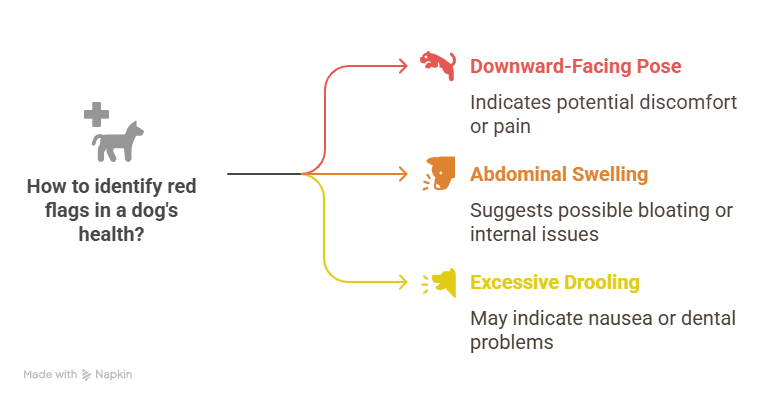
Causes and Risk Factors
Bloat doesn’t strike randomly—it’s often a perfect storm of genetic, behavioral, and environmental triggers.
Understanding these factors can help you mitigate risks and protect your dog.
Genetic Predisposition
Certain breeds are biologically wired for a higher risk due to their anatomy.
Deep-chested, large breeds like Great Danes (with a 14% lifetime prevalence), German Shepherds, Weimaraners, and Collies are disproportionately affected.
Genetic studies suggest inherited traits, such as abnormal stomach motility or specific immune-system markers, may further elevate susceptibility
Dietary Triggers
How—and what—your dog eats plays a critical role:
- Rapid Eating: Gulping food traps air, accelerating gas buildup.
- Large Meals: A single oversized meal stretches the stomach, increasing torsion risk.
- High-Fat Diets: Fatty foods slow digestion, prolonging stomach distension.
Lifestyle and Environment
Timing and habits matter just as much:
- Exercise Around Meals: Vigorous activity within an hour of eating can jostle the stomach, encouraging twisting
- Stress/Anxiety: Nervous dogs, particularly in high-stress environments (e.g., kennels), face heightened risk.
- Overhydration: Drinking excessive water post-meal may exacerbate stomach expansion.
Risk Factors at a Glance
| Risk Factor | Description |
|---|---|
| Breed Predisposition | Single large meals increase stomach distension and pressure. |
| Rapid Eating | High-stress environments or anxious temperaments elevate susceptibility. |
| Large Meals | Activity immediately before/after eating may trigger stomach twisting. |
| Post-Meal Exercise | High-stress environments or anxious temperaments elevate susceptibility. |
| Stress/Anxiety | High-stress environments or anxious temperaments elevate susceptibility . |
By addressing these factors—through portion control, meal pacing, or breed-specific precautions—you can significantly reduce your dog’s risk.
Prevention Strategies
While bloat is unpredictable, proactive measures can drastically reduce your dog’s risk.
Combining smart feeding habits, breed-specific interventions, and lifestyle adjustments creates a robust defense against this emergency.
Feeding Practices
- Slow-Feed Bowls or Portion Pacers: These tools force dogs to eat more slowly, reducing air intake and gas buildup. Puzzle feeders or raised bowls with ridges are excellent options.
- Smaller, Frequent Meals: Divide your dog’s daily food into 3–4 meals instead of one or two large portions. This minimizes stomach distension and pressure .
- Dietary Choices: Opt for low-carb, high-quality diets with minimal soy or cereals. Avoid moistening dry food containing citric acid preservatives, as this may increase gas production.
Breed-Specific Prevention
For deep-chested breeds like Great Danes or German Shepherds, veterinarians often recommend gastropexy—a preventive surgery that tacks the stomach to the abdominal wall.
This procedure, often performed during spaying/neutering, reduces the risk of torsion by up to 80%.
Lifestyle Adjustments
- Exercise Timing: Avoid strenuous activity for at least one hour before and after meals to prevent stomach jostling.
- Stress Reduction: Create a calm feeding environment. Separate multiple pets during meals and minimize noise to reduce anxiety.
- Regular Vet Visits: Schedule annual check-ups to monitor digestive health, especially for senior dogs or those with a family history of bloat.
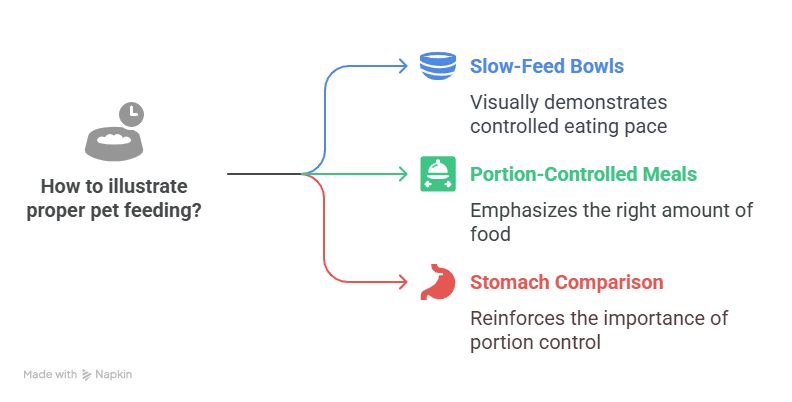
What to Do If You Suspect Bloat
When bloat strikes, every second counts. This section equips you with clear, actionable steps to navigate this emergency with confidence.
Immediate Steps
- Call Your Vet or Emergency Clinic Now: Bloat can become fatal in as little as 1–2 hours. Keep your vet’s number saved in your phone and nearby at home.
- Stay Calm, But Act Fast: While comforting your dog, avoid delaying care—transport them to the clinic immediately, even if symptoms seem mild .
What to Avoid
- Never Attempt Home Remedies: Inducing vomiting or offering food/water could worsen the condition.
- Avoid Diagnosing Online: Bloat symptoms overlap with other issues (e.g., pancreatitis), but only a vet can confirm GDV via X-ray.
Preparation Saves Lives
- Know Your Nearest 24-Hour Clinic: Keep their address, phone number, and directions readily accessible
- Track Symptoms: Note behaviors like retching, restlessness, or abdominal swelling to share with the vet.
Emergency Checklist
📌 Critical Actions:
- Call the vet immediately.
- Note symptoms and timeline.
- Transport your dog calmly (use a crate if needed).
- Avoid food, water, or medications unless directed.
By following these steps, you’ll maximize your dog’s chances of survival.
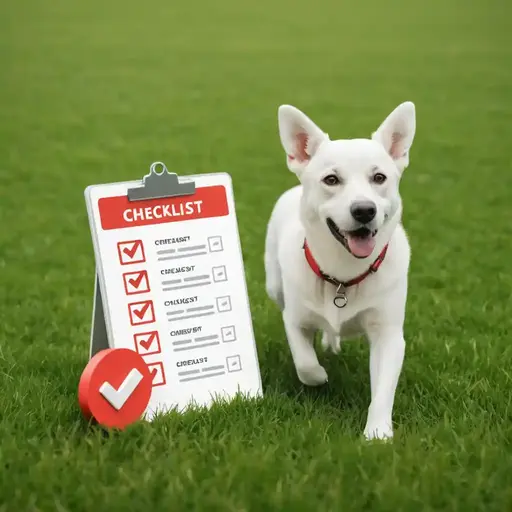
Differentiating Bloat from Other Conditions
While bloat demands urgent care, its symptoms often overlap with other health issues, leading to confusion. Knowing how to distinguish it ensures faster, life-saving decisions.
Conditions That Mimic Bloat
- Pancreatitis: Causes vomiting, abdominal pain, and lethargy but lacks the hallmark stomach twist and gas buildup.
- Intestinal Blockage: Triggers vomiting, loss of appetite, and straining—b, t pain is typically localized, and bloating is rare
- Gastroenteritis: Leads to diarrhea, vomiting, and dehydration, often without the sudden abdominal distension seen in bloat.
Key Differences
Bloat’s unique combination of rapid-onset abdominal swelling and unproductive retching sets it apart.
Unlike other conditions, it progresses within hours, causing systemic collapse if untreated.
When in Doubt, Act
If symptoms like restlessness, pale gums, or a distended belly appear, even alongside vomiting or diarrhea, prioritize a vet visit. Diagnostic tools like X-rays can confirm GDV, ruling out look-alike conditions.
The Importance of Early Detection
Bloat’s rapid progression from mild discomfort to life-threatening emergency underscores why vigilance is your most powerful tool.
Detecting symptoms early can halt the cascade of complications—l, ke stomach torsion or organ failure—before they become irreversible.
Life-Saving Impact
When caught in its early stages, bloat is far more treatable. For example, a dog showing restlessness or unproductive retching but no visible bloating still has a high survival rate if treated promptly .
Delaying care by even an hour can allow the stomach to twist, cutting off blood flow and triggering systemic shock.
Monitoring Tips for Dog Owners
- Post-Meal Observations: Watch for pacing, whining, or attempts to vomit after eating, especially in high-risk breeds.
- Track Subtle Changes: Note behaviors like excessive drooling, reluctance to lie down, or a tucked-up abdomen.n
- Know Your Dog’s Normals: Familiarize yourself with their baseline behavior to spot deviations quickly.
Be Prepared
Bookmark this guide on your phone or save it to your home screen for instant access during emergencies.
Share it with fellow dog owners—your quick action could save a life. Early detection isn’t just a precaution—it’s a lifeline.
Conclusion
Bloat is a silent threat, but knowledge is your first line of defense. By recognizing early signs—like unproductive retching, abdominal swelling, and restlessness—you can intervene before this condition turns fatal.
Understanding risks, from breed predispositions to mealtime habits, empowers you to tailor prevention strategies, whether through portion control, slow-feed tools, or veterinary consultations.
Join the Fight Against Bloat
Share this guide with fellow dog owners. Raising awareness saves lives—your click could protect another beloved pet.
You’re Not Alone
We understand how frightening pet emergencies can be. By learning these signs and prevention tactics, you’re giving your dog the best chance at a healthy, happy life.
Further Reading
For deeper insights, explore these trusted resources:
- American Kennel Club (AKC): Bloat in Dogs: Symptoms & Prevention
- VCA Hospitals: Gastric Dilatation-Volvulus in Dogs
- Tufts University: Bloat Research & Risk Factors
Stay vigilant, stay informed, and cherish every moment with your loyal companion. 🐾
FAQ: Your Top Questions About Bloat in Dogs
Can Small Dogs Get Bloat?
While large, deep-chested breeds like Great Danes are at highest risk, small dogs aren’t immune. Cases have been reported in breeds like Dachshunds and Beagles, often linked to rapid eating or genetic factors. Always monitor for symptoms, regardless of size.
Is Bloat Always Fatal?
No—but time is critical. With immediate veterinary care, survival rates exceed 80% if treated before stomach torsion occurs. Delays beyond 6 hours drop survival to 20%, underscoring the need for urgent action.
How Can I Prevent Bloat?
- Slow Down Meals: Use puzzle feeders or portion-controlled bowls to reduce gulping.
- Avoid Post-Meal Activity: Wait 1–2 hours after eating before exercise.
- Breed-Specific Care: Consider preventive gastropexy for high-risk breeds.
What Are the Earliest Signs of Bloat?
Watch for:
- Restlessness or pacing
- Unproductive retching (often producing white foam)
- A visibly swollen or tight abdomen
- Pale gums or rapid heart rate.
Do Elevated Food Bowls Help?
Contrary to older advice, raised bowls may increase the risk for some dogs by altering swallowing mechanics. Stick to ground-level feeding unless otherwise advised by your vet.
Can Diet Influence Bloat Risk?
Yes. High-fat meals, dry food with citric acid preservatives (when moistened), and large portion sizes elevate risk. Opt for low-carb, high-quality diets split into 3–4 smaller meals daily.
By understanding these answers, you’re better equipped to protect your dog. Remember—when in doubt, always consult your veterinarian. 🐾


